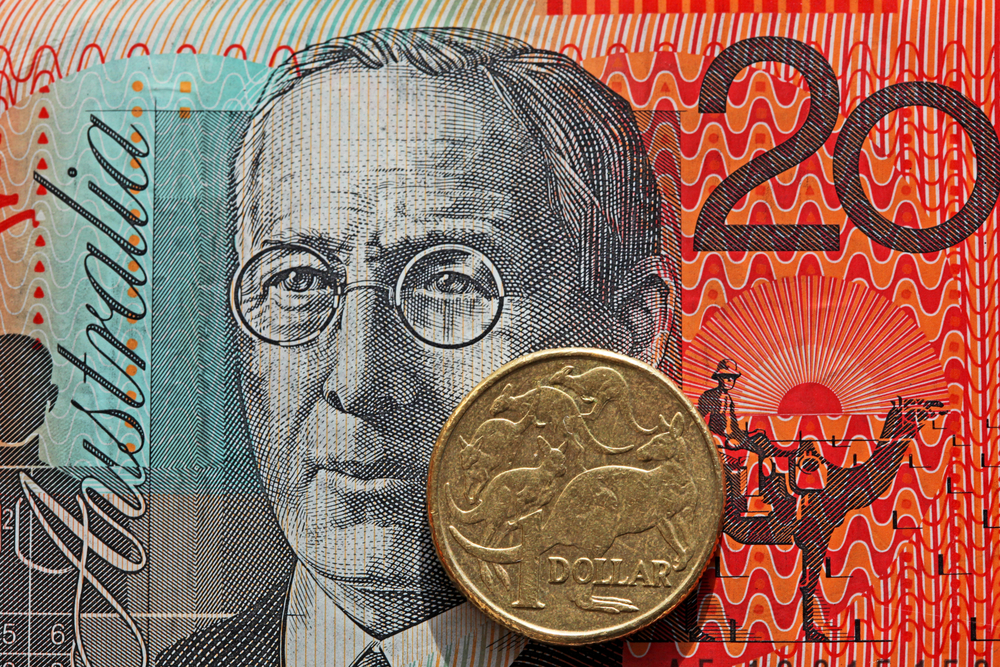The RBA (reserve bank of Australia) caught market doves off guard on Tuesday morning, by agreeing to keep the cash rate unchanged at 1.5%, despite the weight of economic opinion, from the economists polled by Reuters, predicting the rate would be cut to 1.25%. GDP growth has slumped in Australia, inflation is low, unemployment pressures are building up and global growth is benign, whilst exports dropped by -2% MoM in March.

These were issues that Governor Poloz covered in his monetary policy statement, to somehow justify the current “wait and see” approach. Markets are now predicting a circa 38% chance, according to Reuters, that the rate will be cut to 1.00%, before the end of 2019. At 8:20am U.K. time AUD/USD traded up 0.59% at 0.702, having broken up through R2, whilst threatening to breach R3. The Aussie dollar made similar gains versus several of its peers; rising by 0.43% versus the euro and 0.42% versus yen.
Chinese markets stabilised during the early morning trading session on Tuesday May 7th, despite Trump reinforcing his further tariff threats on Monday evening and time scaling the implementation of the increased tariffs, to begin on Friday May 10th. He intends to raise the current tariffs to 25% from 10% on $200b of Chinese imports into the USA and apply the same tariffs on the total $550b the USA imports annually. The CSI closed up 0.98% and the Shanghai Composite up 0.69%, as news broke that both the USA and China may continue the talks, despite the baffling lack of diplomacy displayed by Trump and his entourage.
At 8:45am U.K. time, USD/CNY traded close to flat at 6.777, whilst futures markets were indicating a fall of 0.23%, in both the SPX and NASDAQ indices, once New York opens on Tuesday afternoon. It’s a relatively quiet day for USA economic calendar news, only the JOLTS (job openings) data and two Fed officials delivering speeches, are listed as events which could impact on markets for equities and forex. USD/JPY traded at 110.67, close to flat and in a very tight range, on the daily pivot point, maintaining position above the 110.0 handle/round number.
Eurozone economic news on Tuesday was dominated by Germany’s latest factory orders data, published by Germany’s statistics authorities. The readings missed forecasts; monthly growth in March only picked up by 0.6% versus expectations of 1.5%, leaving annual growth floundering in negative territory, down -6.0%. Germany’s construction PMI from Markit, also missed the Reuters forecast; coming in at 53.0 in April. Analysts had been expecting a positive bounce in this data series, indicating that Germany had put a floor under the recent slump, which German and E.Z. authorities and the ECB, have blamed on China’s lack of orders, combined with the uncertainty caused by the Brexit debacle.
At 9:00am U.K. time EUR/USD traded at 1.119, the major pair whipsawed in a tight range, between the daily pivot point and the first level of resistance, giving up the earlier sessions’ gains (which had previously seen the bullish price action threaten to breach R1) after the German data was published. The euro traded mostly flat or down versus the majority of its peers, in the early stages of the London-European trading session. Eurozone equity indices traded in narrow ranges, Germany’s DAX was up 0.09%, whilst France’s CAC traded down -0.02%. BMW stock fell, as the automaker posted its first quarterly loss in a decade, as a consequence of falling sales.
Current U.K. economic news mainly concerns any potential political developments, in relation to Brexit. Despite the European Union pushing back the ultimate exit date to October 31st, the current U.K. government remains in a precarious position, after losing approximately 25% of its seats in the recent local government elections. Many Tory MPs are now pressing prime minister May to resign, despite the replacements touted being more extreme in their Brexit stance. And unless a withdrawal agreement (WA) is rushed through Parliament inside the next fortnight, then the Tories are facing further humiliation at the European elections on May 23rd. The likelihood of Parliament voting through a WA is slim, based on the Tory and Labour Party talks achieving zero progress.
At 9:25am U.K. time GPB/USD traded in a narrow range, with a bias to the downside at 1.308, just below the daily pivot point and down -0.04%, remaining above the 200 DMA sited at 1.295 and close to the 100 DMA, sited at 1.310. The U.K. FTSE 100 traded down -0.21%, as the year to date rise has receded to below 10%, whilst at 7,365 price remains circa 10% below its all time high of 7,903, posted in 2018.


